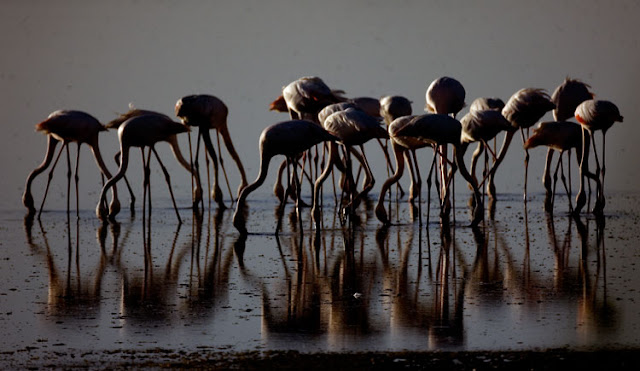El Torcal de Antequera is a nature reserve in the Sierra del Torcal mountain range located south of the city of Antequera, in the province of Málaga off the A45 road in Andalusia, Spain.
Address: Centro de Visitantes del Torcal de Antequera, Paraje Natural Torcal de Antequera Ctra. 7075 s/n, 29200 Antequera, Malaga, Spain
| Hours: |
|
 |
| The extraordinary limestone rock formations of El Torcal, Antequera |
35 kilometres north of Malaga and 10 kilometres west of Antequera, near the village of Villanueva de la Concepcion, lies another world. A world of fantastical limestone formations and flower covered valleys, of fragrant pine forests and rugged canyons.
This is a world where time has stood still, where eagles soar on thermals and Ibex roam.
El Torcal Park is a haven of peace and tranquility, 17 square kilometres of some of the most beautiful and impressive limestone landscapes in Europe.
The whole area lay under the sea until one about hundred million years ago. Then the violent movements of the Earth's crust forced it upward into hills and mountains reaching 1,300 metres in height with the limestone retaining a layered horizontal formation. After this, over the millions of years, the rain and wind chiselled away at these layers to form incredible shapes.
To reach the heart of the park the road winds up to 1,100 metres above sea level with spectacular views all along. At the end of the road is a parking area with an information centre, a small observatory and a small museum exhibiting the flora and fauna of the park.
Orchid enthusiasts will be captivated by the 30 varieties growing in the park.
There are three marked walking routes through the park marked with coloured arrows.
The green route is the shortest and easiest at 1.5 kilometres and taking about 30 minutes.
The yellow route is 2.5 kilometres, taking you to "Las Ventanillas" (The Windows) at 1,200 metres for panoramic views of the valley of Malaga.
The red route is the longest and most difficult, at 4.5 kilometres it takes about three hours, with a viewing point 1,339 metres altitude where you can see the whole of El Torcal Park and the African Coastline.






















